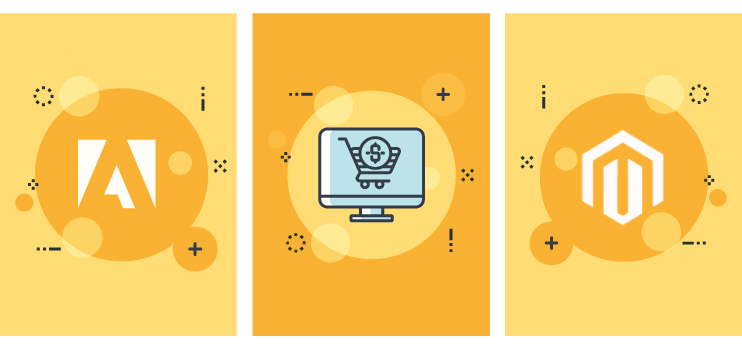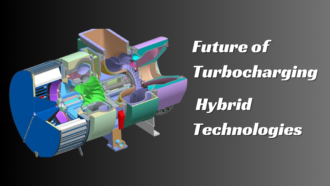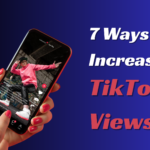Top 5 Magento PWA Benefits
The year 2015 marked the shift toward a new epoch of web development. It was the year when progressive web applications got out into the world. The developer community has adopted the methodology and by the beginning of 2020, the web environment was filled with applications built with progressive JavaScript frameworks.
Introduced by Google, PWAs took both the performance and UX of regular websites to a new level. Thanks to the client-side rendering approach and GraphQL, they present unrivalled performance and page load speed on desktops. Yet on mobile devices, progressive applications provide the look and feel of native apps.
PWAs and e-commerce websites are a match made in heaven. With all the incredible possibilities the methodology offers, more and more famous brands turn their regular websites into web applications. For instance, e-commerce giants like Adidas, Puma, Oliver Bonas, Lancome, and NYX have already adopted the approach and are reaping the fruits of this wise decision.
Being one of the most popular platforms for e-commerce websites, Magento also doesn’t lag. The CMS has announced PWA Studio – its own set of tools and frameworks that help to build an app shell on top of any Magento 2 website.
But what does a PWA mean? And what advantages can this technology bring to your Magento store?
What is a PWA?
A Progressive Web Application is a curious mix of a native app and a responsive website. In a nutshell, with a PWA, a user can get a native-like UX while still operating in a browser.
On the one hand, a PWA keeps all the advantages of responsive sites – it is discoverable for search engines, available from any browser, and does not require installation. On the other hand, it looks and feels exactly like a native app. For instance, users can add a PWA to their home screens and see a shortcut appearing on the devices.
Initiated by Google in 2015, PWA development methodology has become a real trend that sidelined both native apps and responsive websites. Nowadays, you can hardly find a prosperous e-commerce business that has not implemented a PWA yet.
Let’s assume that your Magento store can send push notifications to your customers, deliver localized content, or provide a barcode scanner for dealing with authentication and discounts. This is how PWAs work!
But is a PWA the right choice for e-commerce businesses?
TOP 5 Benefits of Magento PWAs
Compactness
The times when people downloaded and stored a plethora of massive apps on their devices came into oblivion. As most users open e-commerce native apps no more than twice a month to purchase something, they no longer want to store massive applications that take up lots of storage space. A PWA is a lightweight alternative.
To put this in perspective, the average app file size for iOS is 38 MB and 15 MB for Android. Of course, there are bigger ones, for example, gaming or programming apps. PWAs are much smaller as they don’t require downloading APK files. Their overall size hardly surpasses 2 MB.
Let’s take Jumia’s PWA as an example. Jumia is one of the most popular Nigerian marketplaces where people can buy almost everything from food and groceries to TV sets and game consoles. As far as most of the Nigerian residents have outdated smartphones and every megabyte is gold dust, compactness is a king. Implementing a Progressive Web App in their standard Magento website allowed the company to reduce the storage space up to 25 times in comparison with their native analogue.
Extremely fast speed and offline functionality
Magento is a powerful, highly customizable platform with advanced functionality and lots of features. However, all these advantages come at the price of speed. By default, this CMS is slow. Building a Magento PWA is a great way to make your e-commerce website much faster. As far as Google penalizes websites that load slowly, speed is essential.
In a nutshell, a PWA divides the website so that all JS and CSS files are rendered on Storefront, while the updates are executed on the back-end. Thus, when a visitor opens your Magento PWA for the first time, all essential elements (like the footer or header) are downloaded on the storefront. So, when the user goes to another page, it will load much faster because those elements have already been loaded. As a result, your Magento website performs better.
Let’s have a look at Ele. me, the biggest food ordering and delivery e-commerce in China. After they transformed their Magento website into a PWA, they saw a decrease in page loading speed by 11,6% across all pre-cached pages.
Moreover, thanks to site caching, PWAs can work even without an Internet connection. Once loaded, the website is available even in a disconnected mode. This feature allows users to look through the content and change their orders from wherever they are.
Low development cost
Cost-effectiveness is one of the most determinative factors when it comes to building an app. This is especially true for those e-commerce businesses that are only gathering their strength and have a limited budget.
Let’s see what the numbers are. The cost of developing a native app for the average online store is between $20,000-$80,000. Besides, developers need to customize this app for at least 3 stores: App Store, Google Play, and Microsoft Store. Not to mention the fact that native apps should be updated at least once a year to meet new requirements.
The price of the average Magento PWA varies from $15,000 to $50,000 depending on your business size. It is much lower as compared to native app development. Besides, there will be a bonus for the clients. With a PWA developed, they get both a progressive app and a mobile-friendly Magento website available from all browsers.
App-Like Experience To Your Customers
One of the main benefits of progressive apps is the perfect UX and UI experience that they deliver. What does this mean for your Magento store? There is a strong correlation between UX and conversion rates. Better user experience means higher conversions and, consequently, more revenue.
What can this app-like UX look like? To make things clear, let’s have a look at the Lancôme PWA. Apart from cutting-edge features focused on their customer needs, they provide the opportunity to try on their products before buying. As such, thanks to the ability to gain access to the device’s hardware and software, with this PWA, the users may see how, say, a lipstick would look on their lips.
Besides, the design of their Magento PWA is in no way different from their native app, so that customers can stay within their comfort zones.
Push notifications
Push notifications are messages that pop up on the screens of mobile devices. This feature can be triggered by opening an app or it can be delivered in real-time to the users, even when the browser is not opened and the app is not active.
The main purpose of push notifications is to re-engage prospects and keep everyone who installed your Magento progressive app up to date with the latest activity, features, and content. For instance, with notifications, you can keep the customers engaged with new arrivals, special promotions, shipping updates, and upcoming events without the need to keep your website open.
Push notifications are a robust tool to inspire shoppers to make new purchases and remind the customers of your company’s services/products.
Final Word
Transforming your Magento e-commerce website into a progressive web app can bring lots of benefits to your business. A PWA is an actionable way to deliver a fast and convenient UX saving both time and money.


















